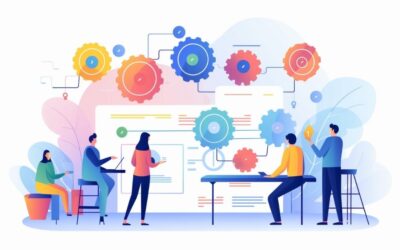The digital environment that modern organizations operate in is a goldmine for hackers. This means that every department of the organization, including HR, is expected to maintain the highest standard of data security. It’s simply non-negotiable.
A data breach report by IBM shows that 19% of breaches occur due to stolen sign-in information. The report shows online criminals target the HR department often to steal employee data. In order to avoid this, human resource professionals need to understand the types of data threats their organizations face, and take measures to improve HR data security.
A strong HR data security policy is a great start to help manage third-party security threats, but it’s not enough. The human resource department also needs to be in sync with the IT department in order to educate employees.
With this article, you’ll understand what role the human resources department needs to play, and what it can do to ensure HR data security.
- Why HR data security is critical now
- The role of HR in data protection
- 7 Practices for HR data security
- 1. Ensure all software and operating systems are up to date
- 2. Enforce best password practices across the HR department
- 3. Manage third-party security risks
- 4. Keep the human resource department in sync with the IT team
- 5. Stay compliant with data protection regulations
- 6. Regularly scan for vulnerabilities and conduct penetration testing
- 7. Educate employees on data protection best practices
Why HR data security is critical now
Recently, IBM reported that companies spend about $4.5 million annually due to data breaches. The report shows companies located in the USA spend double that amount. This budget is spent on hiring cyber security specialists and investing in specific security tools.
Security reports show that social engineering and third-party exposure are some of the biggest cyber risks now. The HR department is not safe from these threats, due to the vast amount of employee data it holds. That’s why HR managers need to put in place online security policies that not only improve HR data security, but also protect the entire company.
A recent report by Astra found that more than 2,200 cyber-attacks happen daily today. Moreover, according to Gartner, about 30% of cyberattacks will take advantage of AI to improve attack effectiveness. Based on these reports, you can understand that HR data security is critical and calls for the implementation of an effective HR strategy.
The role of HR in data protection
HR data security is the responsibility of every worker and other stakeholders in an organization. Nevertheless, the human resource department has a special and important role to play. It should ensure all workers receive enough training on data protection. Moreover, they need to create and put into practice policies that safeguard all data in the organization.
The HR team has a responsibility to ensure data is collected, analyzed, and interpreted through the right channels, in compliance with both local and international guidelines. Also, it should decide and implement data access controls for all workers.
Under the leadership of the HR manager, the department has a responsibility to help handle online security incidents that involve employees. Creating a crisis management plan in collaboration with other departments can be particularly useful for managing such incidents, and minimizing the impact of the attack.
7 Practices for HR data security
The human resource department handles different types of data. It may include employee insurance, recruitment, training management, performance and employee health data. The safety of this data is important due to its sensitivity. Here are 7 HR data security best practices for handling any type of data in the human resource department.
1. Ensure all software and operating systems are up to date
Outdated software may present unfriendly issues such as bugs. The system may experience crashes often. Performing frequent updates brings new features and boosts the productivity of the software. But most importantly, it helps maintain system security.
Updated software offers improved protection against common threats, and ensures the installed programs are compatible. Human resources thus needs to ensure its entire system is updated to make sure HR data stay safe.
Another common security threat is account vulnerability. It can be caused by poor authentication or weak password management. Other issues such as infected apps and outdated software may cause account vulnerability. Therefore, organizations must detect and fix vulnerable accounts on time.
2. Enforce best password practices across the HR department
Human resource departments often experience phishing and password attacks. Cybercriminals use malware to get important data from the department. Creating and ensuring the enforcement of password best practices is thus necessary for HR professionals. These best practices should be applied by everyone in the organization. HR should thus help IT train the rest of the team on how to protect themselves when accessing their account.
Best practices might include:
- using a password manager
- avoiding weak login data
- discouraging password sharing
- implementing double authentication
3. Manage third-party security risks
Third-party risks come as organizations engage with external service and product providers. If the service providers such as software vendors get hacked, the organizations they supply get affected too. Mitigation best practices may include:
- restricting access to company systems
- conducting screenings regularly
- having protection policies against third parties in place
- using the latest security technologies
- creating a schedule for regular screenings, using Google calendar time tracking or Talkspirit’s shared agenda
4. Keep the human resource department in sync with the IT team
The HR and IT departments need to work as one unit for the sake of HR data security enhancement. When they are in sync, the IT department can help the HR department identify protective tools, and build a strong and resilient security system. Staying in sync boosts communication when the management needs to decide on the software to buy.
Also read: [Expert Opinion] 4 Security Commandments for the CIO in the Era of Hybrid Work
5. Stay compliant with data protection regulations
Organizations get a lot of benefits when they observe compliance with all local and international standards. It not only benefits the HR department but also the employees. They get the feeling that the company cares about their safety. HR professionals need to understand the cybercrime and data protection laws that exist and stay compliant. They also need to respect individual and corporate rights to data.
6. Regularly scan for vulnerabilities and conduct penetration testing
A good way to improve HR data security is to do regular penetration tests (ethical hacking to test the security measures with planned attacks) and scan for vulnerabilities. Scanning provides an accurate protection of data with vulnerability. This type of scanning may require automation while penetration requires hands-on scanning to detect any system weaknesses. If any weaknesses are detected it allows the department to take corrective measures in an instant.
7. Educate employees on data protection best practices
Finally, you should empower employees to proactively protect their data. Teach them how to do safety audits and store data securely. Help them learn which software they can install, what type of data they can share on it, and how to handle suspicious emails.
Also read: Cybersecurity: 4 Ideas to Raise Awareness Among Your Employees
Using a secure collaboration platform like Talkspirit can help keep the data you store and share completely safe from cyberattacks. You can use it to chat with colleagues, do video conferences, create publications, store documents, document processes, manage projects, and much more. Instead of scattering your data on various communication tools, you only need to use one!
Our solution is certified ISO 27001 and GDPR-compliant, so no worries, we’ve got you covered!
To conclude
HR departments experience common cybersecurity threats such as exposure due to human error and poor access controls. Breaches in the department not only affect the organization but its employees too. The human resource department has the responsibility of ensuring strong HR data security protocols and processes are put in place. They need to train workers about online security and maintain healthy information systems. But for this to work, it requires the involvement of every worker in a company.
The IT department also has a strong role to play in HR data security. Therefore, it must be aware of the main cybersecurity risks, and the best practices to implement in order to avoid it. At Talkspirit, we have created a white paper for CIOs that tackles this exact topic. Download it and send it to your IT department to make sure you’re on the same page!



![[Expert Opinion] Elmy’s Journey to Becoming a Mission-Driven Company](https://blog.talkspirit.com/wp-content/uploads/2024/11/How-to-become-a-mission-driven-company-400x250.jpg)
